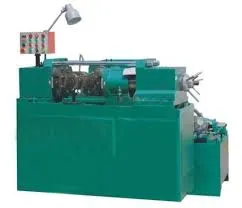
-
 Afrikaans
Afrikaans -
 Albanian
Albanian -
 Amharic
Amharic -
 Arabic
Arabic -
 Armenian
Armenian -
 Azerbaijani
Azerbaijani -
 Basque
Basque -
 Belarusian
Belarusian -
 Bengali
Bengali -
 Bosnian
Bosnian -
 Bulgarian
Bulgarian -
 Catalan
Catalan -
 Cebuano
Cebuano -
 Corsican
Corsican -
 Croatian
Croatian -
 Czech
Czech -
 Danish
Danish -
 Dutch
Dutch -
 English
English -
 Esperanto
Esperanto -
 Estonian
Estonian -
 Finnish
Finnish -
 French
French -
 Frisian
Frisian -
 Galician
Galician -
 Georgian
Georgian -
 German
German -
 Greek
Greek -
 Gujarati
Gujarati -
 Haitian Creole
Haitian Creole -
 hausa
hausa -
 hawaiian
hawaiian -
 Hebrew
Hebrew -
 Hindi
Hindi -
 Miao
Miao -
 Hungarian
Hungarian -
 Icelandic
Icelandic -
 igbo
igbo -
 Indonesian
Indonesian -
 irish
irish -
 Italian
Italian -
 Japanese
Japanese -
 Javanese
Javanese -
 Kannada
Kannada -
 kazakh
kazakh -
 Khmer
Khmer -
 Rwandese
Rwandese -
 Korean
Korean -
 Kurdish
Kurdish -
 Kyrgyz
Kyrgyz -
 Lao
Lao -
 Latin
Latin -
 Latvian
Latvian -
 Lithuanian
Lithuanian -
 Luxembourgish
Luxembourgish -
 Macedonian
Macedonian -
 Malgashi
Malgashi -
 Malay
Malay -
 Malayalam
Malayalam -
 Maltese
Maltese -
 Maori
Maori -
 Marathi
Marathi -
 Mongolian
Mongolian -
 Myanmar
Myanmar -
 Nepali
Nepali -
 Norwegian
Norwegian -
 Norwegian
Norwegian -
 Occitan
Occitan -
 Pashto
Pashto -
 Persian
Persian -
 Polish
Polish -
 Portuguese
Portuguese -
 Punjabi
Punjabi -
 Romanian
Romanian -
 Russian
Russian -
 Samoan
Samoan -
 Scottish Gaelic
Scottish Gaelic -
 Serbian
Serbian -
 Sesotho
Sesotho -
 Shona
Shona -
 Sindhi
Sindhi -
 Sinhala
Sinhala -
 Slovak
Slovak -
 Slovenian
Slovenian -
 Somali
Somali -
 Spanish
Spanish -
 Sundanese
Sundanese -
 Swahili
Swahili -
 Swedish
Swedish -
 Tagalog
Tagalog -
 Tajik
Tajik -
 Tamil
Tamil -
 Tatar
Tatar -
 Telugu
Telugu -
 Thai
Thai -
 Turkish
Turkish -
 Turkmen
Turkmen -
 Ukrainian
Ukrainian -
 Urdu
Urdu -
 Uighur
Uighur -
 Uzbek
Uzbek -
 Vietnamese
Vietnamese -
 Welsh
Welsh -
 Bantu
Bantu -
 Yiddish
Yiddish -
 Yoruba
Yoruba -
 Zulu
Zulu
Understanding the Operation of a Thread Rolling Machine in Manufacturing Processes
The Working Principle of a Thread Rolling Machine
Thread rolling machines play a crucial role in the manufacturing industry, particularly in the production of fasteners such as bolts, screws, and nuts. Unlike traditional cutting methods, thread rolling is a cold-forming process that not only enhances the mechanical properties of the material but also reduces waste. This article delves into the working principle of thread rolling machines, their types, and advantages.
Working Principle of Thread Rolling Machines
At its core, a thread rolling machine operates by using a pair of dies that shape the metal blank into a threaded form. The process typically involves three main stages loading, rolling, and unloading.
1. Loading The first step involves placing a metal blank—often made of steel, aluminum, or another ductile material—into the machine. The blank is typically cylindrical and can vary in size, depending on the specifications of the final product.
2. Rolling Once the blank is loaded, the machine activates the rolling mechanism. The two dies rotate in opposite directions and come together to grip the blank. As the dies make contact, they apply pressure, causing the high-strength blank to flow and take the shape of the threads carved into the dies. This stage is where the cold forming takes place, and the material does not melt but instead is mechanically deformed, enhancing its tensile strength.
3. Unloading After the threading process is complete, the newly formed threaded component is ejected from the machine. The end product is typically ready for further finishing processes or can be used directly.
Types of Thread Rolling Machines
thread rolling machine working

There are primarily three types of thread rolling machines flat die, cylindrical die, and vertical thread rolling machines.
- Flat Die Machines These machines use flat dies to create threads. They are suitable for smaller production runs and can be easily adjusted for different thread sizes.
- Cylindrical Die Machines These machines are designed for high-volume production and offer greater efficiency and speed. They use cylindrical dies to simultaneously produce multiple threads on a single blank, making them ideal for mass manufacturing.
- Vertical Thread Rolling Machines Generally used for heavier and larger parts, these machines operate in a vertical plane and can produce longer threads with high precision.
Advantages of Thread Rolling Machines
Thread rolling offers several advantages over traditional cutting methods. Firstly, it produces minimal waste since the material is reshaped rather than removed. This process can lead to a more efficient material usage, resulting in cost savings. Secondly, the cold working nature of threading improves the mechanical properties of the finished product, such as hardness and tensile strength.
Furthermore, thread rolling provides excellent consistency and precision in the dimensions of the threads, which is crucial in ensuring the reliability of fasteners. This method also allows for the production of intricate thread profiles that may be challenging to achieve with cutting.
In conclusion, thread rolling machines are indispensable tools in modern manufacturing. Their efficient operation enhances product quality, reduces waste, and optimizes production processes, making them essential for industries reliant on high-quality threaded components. As technology advances, thread rolling machines continue to evolve, promising even greater efficiency and precision in the manufacturing landscape.
